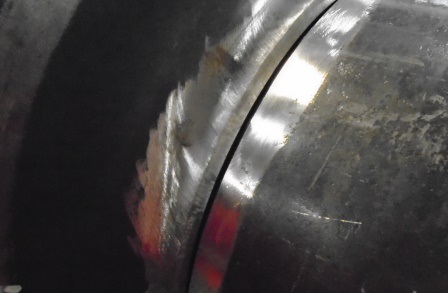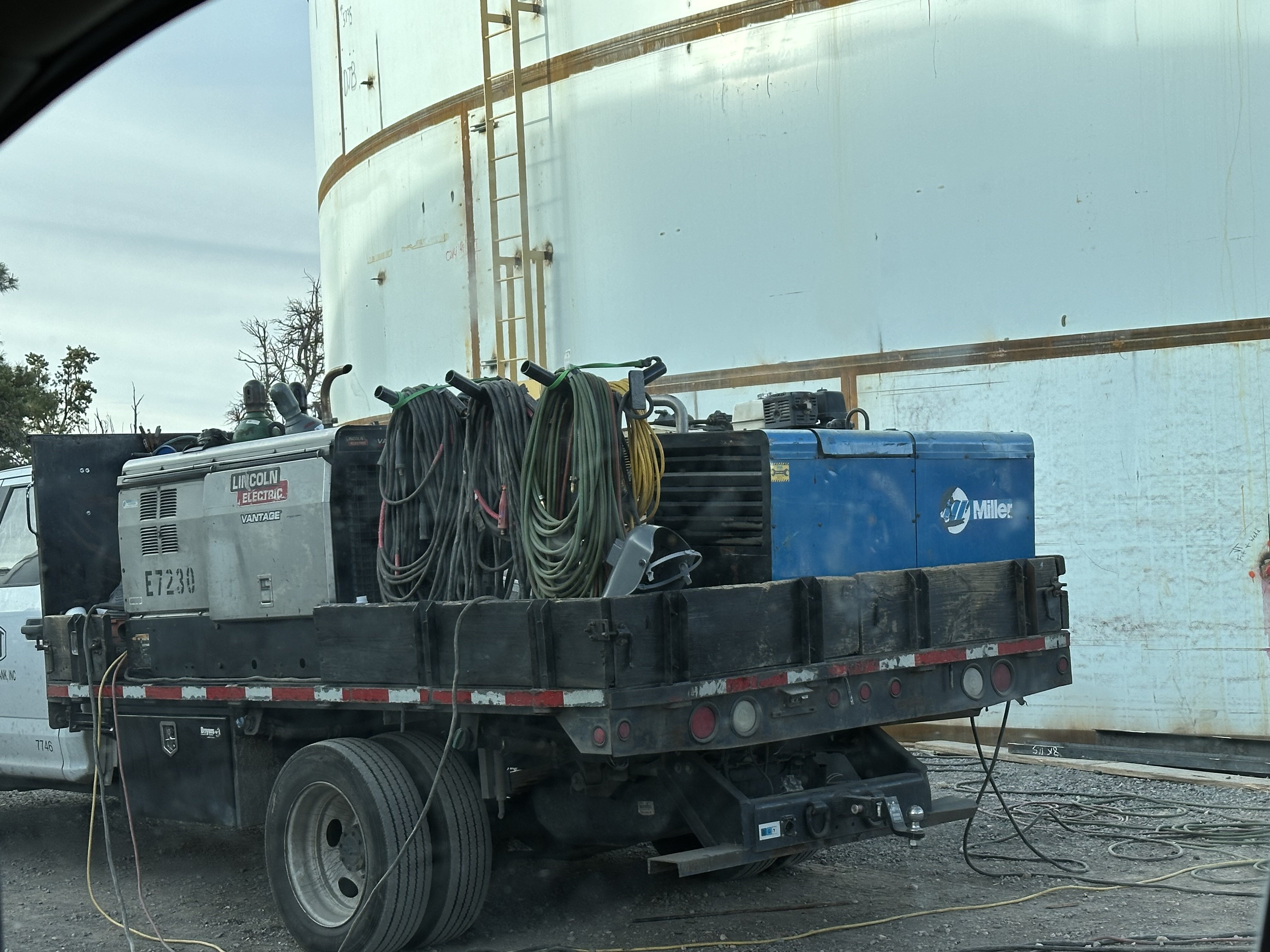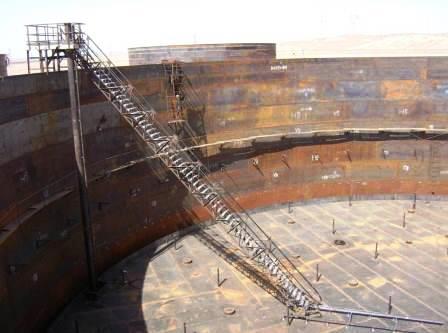An In-depth Overview of Container Welding Assessment Requirements and Methodologies for Improved Weld High Quality and Performance
The relevance of welding inspection requirements in the manufacturing of tanks can not be overemphasized, as they act as the backbone for making sure weld honesty and operational reliability. Numerous evaluation strategies, including aesthetic analyses and progressed non-destructive screening techniques, are vital in identifying potential flaws that could endanger efficiency. Additionally, sticking to governing requirements not just boosts weld top quality yet likewise mitigates the danger of costly failings. As we explore the subtleties of these approaches, it comes to be crucial to take into consideration exactly how an organized approach can reinvent present methods and bring about substantial enhancements in results.
Relevance of Welding Assessment Standards

Welding evaluation criteria incorporate a variety of standards, consisting of material requirements, welding treatments, and qualifications of employees included in the welding procedure. By implementing these requirements, organizations can methodically recognize and fix possible flaws, thus reducing the possibility of pricey repair services or tragic failures. Rigorous inspection practices cultivate a society of liability and accuracy, motivating welders to keep high degrees of craftsmanship.

Usual Welding Examination Strategies


Ultrasonic Testing (UT) is an additional prevalent technique, making use of high-frequency sound waves to find internal defects that might not show up on the surface. This approach is specifically reliable for recognizing voids or incorporations within the weld metal. Magnetic Fragment Checking (MT) is additionally extensively utilized, specifically for ferromagnetic products, as it exposes surface and near-surface defects through the application of electromagnetic fields and ferrous fragments.
Additionally, Liquid Penetrant Testing (PT) detects surface-breaking flaws by applying a penetrant to the weld and after that making use of a designer to draw out the penetrant. Each of these strategies adds to a thorough inspection method, ensuring that welds meet the stringent high quality requirements needed in container building.
Regulatory Criteria and Conformity
Regulative criteria and compliance are necessary parts in making certain the safety and dependability of bonded frameworks in tank building - Tank Welding Inspection. These standards serve to establish minimum requirements for product residential or commercial properties, welding procedures, and examination techniques, therefore reducing the risk of structural failings and enhancing general performance
Secret organizations, such as the American Culture of Mechanical Designers (ASME) and the American Welding Culture (AWS), supply guidelines that are commonly adopted in the sector. Conformity with these criteria not only makes certain adherence to finest techniques however additionally fulfills lawful and legal obligations, safeguarding the passions of stakeholders.
Regulative bodies often mandate adherence to details codes, such as ASME Code Section IX for welding certifications and API 650 for welded containers. These codes lay out demands for welding methods, credentials of personnel, and link testing techniques to confirm weld honesty.
Routine audits and inspections are critical to maintaining compliance, as they aid determine inconsistencies from established requirements. Non-compliance can cause learn the facts here now significant penalties, job delays, and safety risks. Thus, a robust understanding of governing standards and a dedication to compliance are paramount in achieving top quality and long lasting bonded container frameworks.
Non-Destructive Checking Approaches
Exactly how can the stability of welded structures be guaranteed without triggering damage? Non-destructive screening (NDT) techniques provide a durable service, allowing inspectors to examine weld top quality without endangering the product - Tank Welding Inspection. Amongst the most usual NDT methods are ultrasonic testing (UT), radiographic testing (RT), magnetic bit testing (MT), and color penetrant screening (PT)
Ultrasonic screening employs high-frequency acoustic waves to detect inner defects and identify material residential or commercial properties. It supplies accurate measurements and is specifically reliable for thick materials. Radiographic screening entails passing X-rays or gamma rays with the weld, producing photos that reveal architectural flaws such as fractures or spaces. This approach is vital for analyzing the stability of complex welds.
Magnetic bit testing is suited for ferromagnetic products, where magnetic fields reveal surface area and near-surface interruptions. Dye penetrant screening uses a liquid color to highlight surface-breaking flaws, making it a reliable method for non-porous materials.
Each of these NDT methods has distinct benefits, permitting comprehensive assessments customized to specific materials and welding procedures. By applying these methods, markets can make sure the reliability and safety of bonded structures, eventually boosting total efficiency.
Enhancing Weld Top Quality With Assessment
Efficient inspection plays a crucial duty in improving weld top quality, functioning as an important checkpoint in the manufacture process. By identifying possible issues early, examinations alleviate the risk of jeopardized structural honesty and make sure compliance with market criteria. Using a mix of aesthetic evaluations, non-destructive testing (NDT) techniques, and mechanical evaluations, examiners can detect problems such as porosity, fractures, and incomplete fusion.
Implementing a robust assessment protocol not just enhances the total high quality of welds however additionally fosters a culture of accountability amongst welders and producers. Normal training and qualification of assessment personnel make certain that they are equipped with the necessary abilities to identify and resolve prospective issues efficiently. This proactive strategy decreases rework and connected prices, ultimately adding to forecast effectiveness.
Furthermore, thorough documentation of evaluation searchings for offers useful understandings right into recurring issues, helping with continual enhancement in welding practices. By leveraging innovative technologies, such as automated ultrasonic testing or digital radiography, weld high quality can be improved via extra precise assessments. click here for more info In final thought, an extensive evaluation process is essential in achieving premium welds, guaranteeing security, dependability, and durability in storage tank manufacture.
Conclusion
Finally, the application of extensive storage tank welding evaluation standards and methodologies is essential for making certain weld integrity and efficiency. By utilizing a mix of visual evaluations, non-destructive testing approaches, and adherence to regulatory standards, companies can efficiently identify and alleviate prospective defects. Promoting a culture of liability among welders further improves the high quality of welding procedures. Eventually, these practices add to reduced architectural failings, reduced repair service prices, and improved functional performance within the industry.